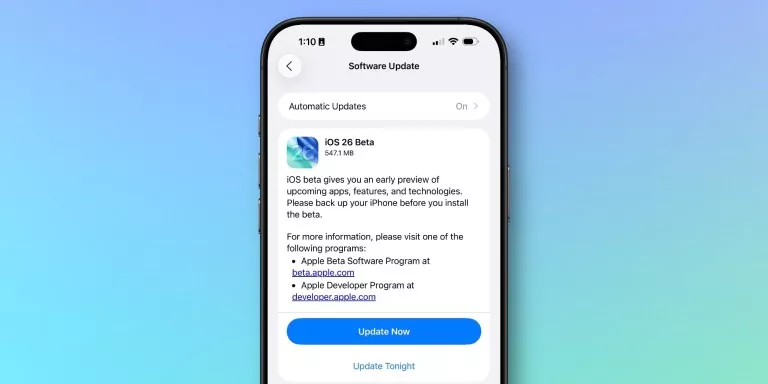Apple just did something unusual. Only days after dropping the first iOS 26 developer beta, they’ve already pushed out a revised build. It’s not beta 2, but this new version points to a significant background fix that has developers and tech fans guessing. After covering countless iOS betas, I can tell you a rapid-fire update like this means Apple found a bug too serious to let slide.
Let’s break down what’s in this new build, why Apple likely rushed it out, who gets it, and what it all means for anyone testing the new OS.
Contents
A Tale of Two Beta Builds
The first iOS 26 beta, which appeared right after the Worldwide Developers Conference (WWDC), was build 23A5260n. The new one, confirmed by sources like MacRumors, is 23A5260u. That small letter change at the end tells us it’s a targeted patch, not a feature update.
So, while iOS 26 is shaping up to be a major overhaul, this specific update isn’t about the cool new stuff. If you were hoping for changes to the “Liquid Glass” look or “Apple Intelligence,” you won’t find them here. This release is all about stability.
Why the Sudden Release?
When Apple pushes out a revised build this fast, it’s almost always because of a critical bug or a security flaw. In the early stages of a new OS, some glitches are expected. A major issue, however, requires an immediate response.
The buzz in the developer world, backed by reports from tech sites like 9to5Mac, is that the first beta had a nasty bug. The chatter points to a battery-related problem that could, in some cases, stop the newest iPhones from booting up. A bug that can brick a phone is exactly the kind of thing that warrants a quick fix. It’s also possible some secret code hinting at future products slipped into the first build, but a device-killing bug is the more likely culprit.
Who Gets the Update? A Targeted Fix
Here’s the interesting part: the new iOS 26 beta isn’t for everyone. Apple is only sending it to the iPhone 15 and iPhone 16 models. This specificity adds weight to the theory of a hardware-specific bug. If you’re testing on an iPhone 14 or older, you won’t see this update. It’s a surgical strike to fix the problem without bothering everyone else.
What This Means for Testers
For any developer out there, this is a classic “this is why we have betas” moment. It’s a reminder to stick to best practices and install early betas on secondary devices, a rule of thumb promoted by the official Apple Developer Program. You just never know when a pre-release build will be unstable.
If you’re running the first iOS 26 beta on an iPhone 15 or 16, you should install this update immediately. It will protect your device from whatever serious issue was lurking in the original release.
For everyone else curious about the new OS, this quick patch is actually a good sign. It shows Apple is actively squashing major bugs. Still, the golden rule of beta testing stands: if you depend on your iPhone daily, you should probably wait for the more stable public beta.
The Road Ahead
This small hiccup is unlikely to delay the official launch of iOS 26. Apple will almost certainly stick to its usual schedule: more developer betas through the summer, a public beta in July, and the final, polished version rolling out to everyone in the fall, right alongside the new iPhones.
Ultimately, the quick revision of iOS 26 beta 1 might be unusual, but it shows Apple is serious about fixing major problems fast. It’s a perfect example of the risks and rewards of testing early software. As the beta season moves forward, expect the experience to get smoother with each update.











